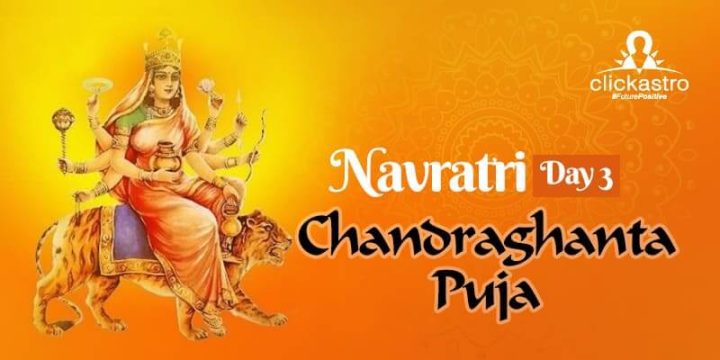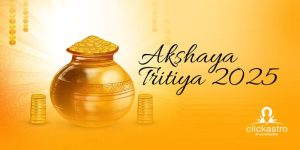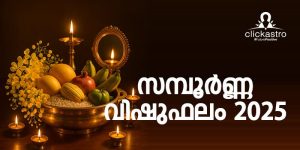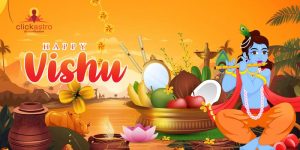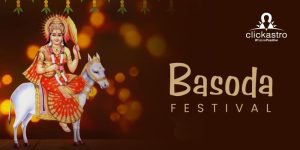Contents[hide]
Read Navratri Day 2 – Brahmacharini Puja
The 3rd day of Navratri is devoted to a special manifestation of the Goddess Adi Shakti. On this day, NavaDurga’s Chandraghanta avatar is worshipped. Chandraghanta Devi is known as the Goddess of spiritual and inner strength. After marrying Goddess Parvati, Lord Shiva adorned the goddess’ forehead with a moon (Chandra) made out of sandalwood (Chandan) and thus Goddess Parvati is also referred to as Chandraghanta. Goddess Chandraghanta is believed to oust issues and minor demons from our life. She is depicted with ten arms and three eyes, as well as Shiva’s crescent moon on her forehead. She is golden complexioned and is geared up for battle. She wears a garland of bells. She rides a tiger and safeguards her devotees while also bringing peace and bestowing supreme grace. She wears a half-moon on her head and holds a large bell or gong. It is believed that Goddess Chandraghanta rules over Venus.The Story of Goddess Chandraghanta
We pray to Goddess Chandraganta on the third day of Navratri. Chandraganta, the goddess whose forehead is adorned with a crescent-shaped moon resembling a temple bell, known as the Ghanta. What is the origin of Chandraganta’s name? How did Goddess Durga take another avatar in this form? Goddess Durga was born as Sati in one of her previous lives and immolated herself during the yajna organized by her father Daksha. She was then reborn to Himavan and Mena, the Gods of the Mountains. According to legend, Himavan and Mena performed severe penance and prayed to Goddess Durga who was then born as their daughter, Parvati. On the advice of Sage Narada, Parvati performed severe penance to win Lord Shiva’s love, and after a severe penance, Lord Shiva agreed to marry her. Lord Shiva, on the other hand, had become broken after losing Sati. He didn’t care about anything anymore. As a result, when he arrived at Himavan and Mena’s house for the wedding ceremony, he appeared to be extremely frightening. His hair was matted, his body was covered in ash, and he had snakes all over him. His appearance terrified everyone who had gathered for the wedding. So much so that his wedding procession included ascetics, ghouls, and ghosts. Seeing Lord Shiva’s appearance, some of Himavan and Mena’s relatives fainted from absolute terror. Parvati was unhappy and terrified when she saw him. But she didn’t want to give up, not now, not after such a difficult penance. So, she too assumed a terrifying appearance. She was enormous, seated on a tiger, and grew ten arms, each holding a different item. She held a trident in one hand, a mace in another, an arrow, a bow, a sword, a lotus, rosary, bell, kamandal (the sacred pot), and she left her tenth hand to bless her devotees. With pure heart she closed her eyes and prayed to Lord Shiva, pleading with him to change his appearance to a more presentable groom and bring a respectable procession. Lord Shiva heard her prayers, and he immediately metamorphosed into his charming avatar. His wedding procession, too, was reformed and included gods, goddesses, other celestial beings. They married with great pomp and grandeur. Since then, devotees celebrate the third day of Navratri by worshipping Goddess Chandraganta, the third avatar of Goddess Durga.Chandraghanta Puja Rituals
On the Tritiya Tithi on Navratri Tritiya Tithi, Chandraghanta Puja is performed. The pooja area is cleansed and purified with Ganga Jal or Gomutra (cow urine). A coconut is then placed on the water-filled pot (Kalash) made from either Silver, Copper, or Earth to perform Kalash sthapna. The worshipper then takes a Sankalp for the puja and performs the shodopchar puja for Goddess Chandraganta. Then, for each deity, relevant puja items are offered. Finally, an aarti is performed and the prasad is then distributed among the devotees. The goddess is offered milk and milk products to appease her. By performing the puja, Goddess Chandraghanta is appeased, and she removes all obstacles.Given below is a puja Vidhi for performing the Chandraghanta puja.
- The following pujas are performed to invoke the Goddess after the installation of the Goddess’s idol or picture.
- To begin, an atma puja is performed to cleanse oneself.
- Following that, the worshipper applies tilak to their forehead and drinks holy water from their palms.
- A Sankalp (vow) is made to the Goddess with the water in one’s hand to observe the Navratri fast with unwavering devotion and righteousness.
- Flowers are then offered to the deity. The Goddess’s feet are then washed in holy water.
- Camphor, water, pure cow milk, ghee, honey, sugar, and panchaamrita are then used to anoint the deity.
- The Goddess is then draped in a Saree or cloth.
- A tilak of sandalwood is applied to the deity. Kumkum, kajal, Durva leaves, and Bilwa leaves are presented to the Goddess.
- An aarti with the dhoop and deep is performed, and prasad is offered to the deity, which is then distributed to the devotees.
Significance of Chandraghanta Puja
By performing the Chandraghanta Puja, devotees witness spiritual grace of Goddess Chandraghanta. They may encounter heavenly scents and mystical sounds. It is believed that the goddess always keeps her devotees safe from harm and provides happiness in their lives. It is said that praying to Goddess Chandraganta with a pure heart, removes all negativity from our lives. All of our sins, unearthly hardships, negativity, distress, mental anxiety, tribulations, and troubles are erased with the divine grace of the goddess. When she rides a lion, she exudes positivity, fierceness, and a motherly aura toward her devotees.Chandraghanta Puja Mantra
Mantra:
Om Devi Chandraghantayai Namaha॥Prarthana:
Pindaja Pravararudha Chandakopastrakairyuta।Prasadam Tanute Mahyam Chandraghanteti Vishruta॥
Stuti:
Ya Devi Sarvabhuteshu Maa Chandraghanta Rupena Samsthita।Namastasyai Namastasyai Namastasyai Namo Namaha॥
Dhyana:
Vande Vanchhitalabhaya Chandrardhakritashekharam।Simharudha Chandraghanta Yashasvinim॥
Manipura Sthitam Tritiya Durga Trinetram।
Khanga, Gada, Trishula, Chapashara, Padma Kamandalu Mala Varabhitakaram॥
Patambara Paridhanam Mriduhasya Nanalankara Bhushitam।
Manjira, Hara, Keyura, Kinkini, Ratnakundala Manditam॥
Praphulla Vandana Bibadhara Kanta Kapolam Tugam Kucham।
Kamaniyam Lavanyam Kshinakati Nitambanim॥

